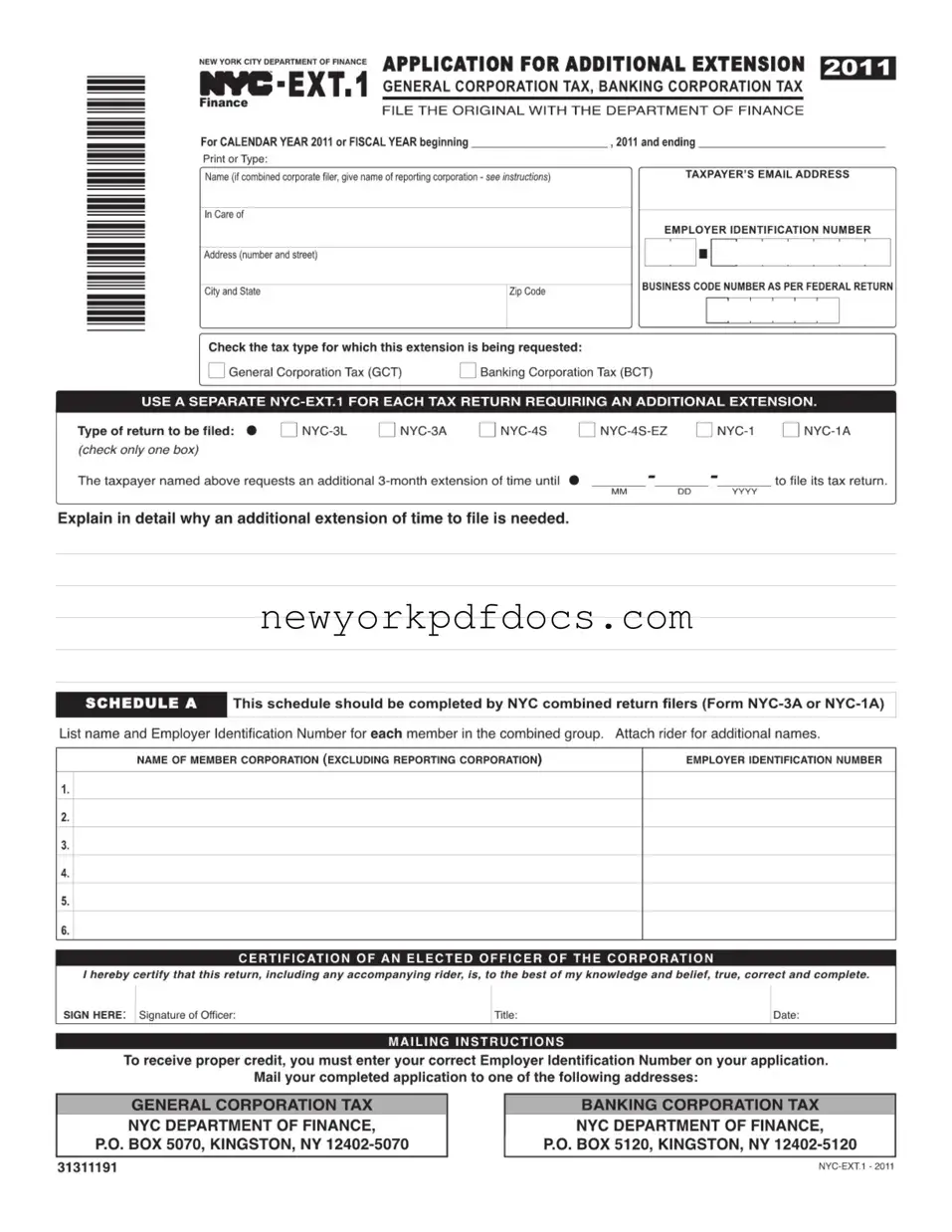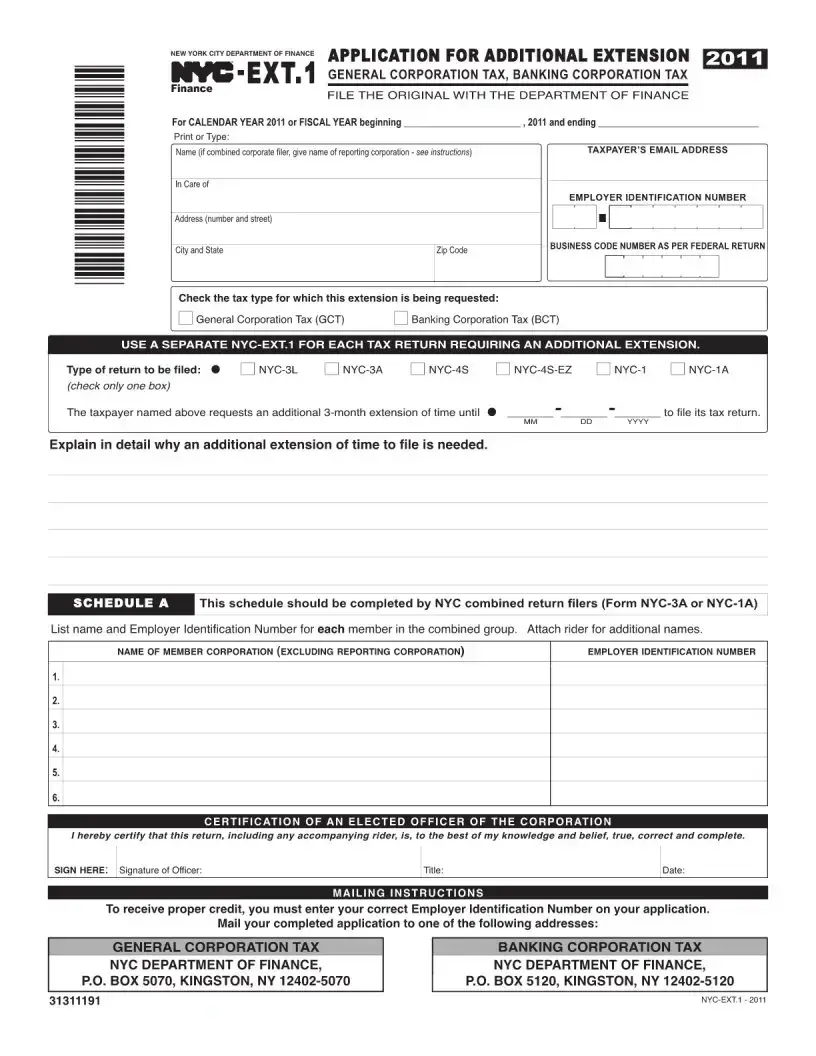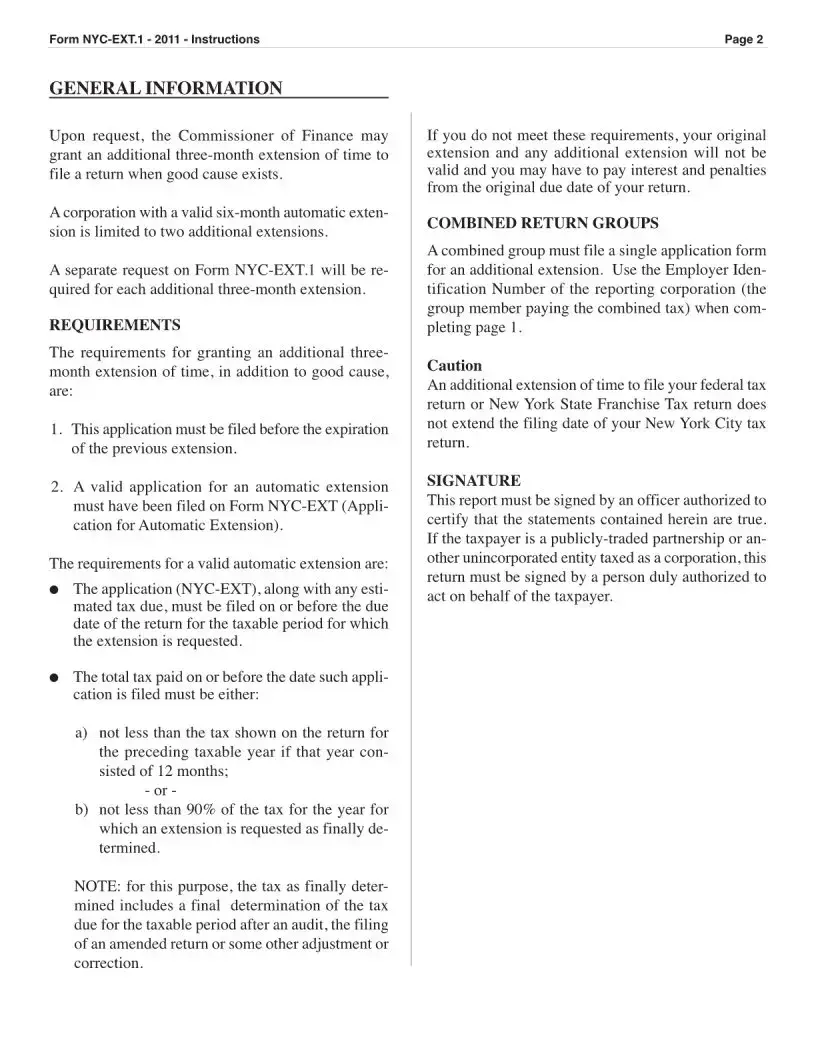The NYC Ext 1 form serves as a critical application for corporations seeking an additional extension to file their general corporation or banking corporation tax returns. This form is specifically designed for those who have already received a six-month automatic extension and require further time to fulfill their tax obligations. It is essential for taxpayers to check the appropriate tax type and specify the type of return they intend to file, whether it be NYC-3L, NYC-3A, or others. The form requires a detailed explanation of the reasons for requesting the extension, emphasizing the necessity for transparency and accountability. Each member of a combined group must be listed, along with their Employer Identification Numbers, ensuring that all entities are properly accounted for. Furthermore, the application must be submitted before the expiration of any previous extensions, and it must comply with specific requirements to be considered valid. This includes having a valid automatic extension previously filed and meeting tax payment thresholds. The form must be signed by an authorized officer of the corporation, underscoring the importance of accurate representation. Failure to adhere to these guidelines may result in penalties and interest, making it imperative for corporations to understand the intricacies of the NYC Ext 1 form.


